Intel: For Mainstream Gamers, Our IGPs Are Equivalent to Discrete GPUs
by Anton Shilov on January 14, 2016 12:03 PM EST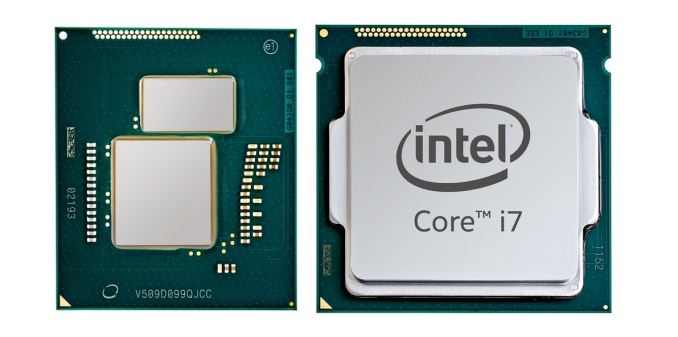
Intel’s integrated graphics processors (iGPUs) are the most widespread PC-class graphics adapters on the planet. Enthusiasts of high-performance personal computers do not use Intel’s iGPUs, but the world’s largest developer of microprocessors says that for mainstream and casual gamers its graphics solutions offer performance, which is comparable to that of inexpensive discrete video cards.
“For the mainstream and casual gamer, we have improved our Iris and Iris Pro graphics tremendously,” said Gregory Bryant, vice president and general manager of the desktop client platforms at Intel, at the J.P. Morgan Tech Forum at the 2016 International CES. “We have improved our graphics performance [by 30 times] from where it was five years ago. We believe that the performance of Intel’s integrated graphics today, what we offer in the products […], is equivalent to the performance of about 80% of discrete [GPU] installed base.”
Intel has been improving its integrated graphics cores at a rapid pace after the company cancelled its discrete graphics processing unit code-named Larrabee in 2010. Thanks to timely transition to newer process technologies, Intel could increase transistor budgets of its central processing units significantly every couple of years. As the company did not increase the number of general-purpose cores inside its mainstream CPUs for desktop and mobile personal computers in the recent years, the lion’s share of that additional transistor budget was spent on iGPU-related improvements.
Intel considers its code-named Clarkdale and Arrandale processors its first-generation CPUs with integrated graphics (which is not entirely correct since these CPUs had two dies: the processor die as well as graphics and integrated memory controller die). Back then, Intel’s most advanced iGPU featured 12 execution units (EU) with peak compute performance of around 43 GFLOPS. Since then, the architecture of Intel’s integrated graphics processors has evolved to accommodate new features and gain performance. Today, each EU features two ALUs that can execute up to four 32-bit floating point or integer operations per cycle (in fact, one of the two ALUs in Intel’s Gen8 EU also supports double precision 64-bit floating point operations). Intel’s latest microprocessors — Broadwell with GT3e and Skylake with GT4e graphics cores — have Iris Pro iGPUs with 48 and 72 EUs as well as peak compute performance of 883 and 1152 GFLOPS, respectively.
While Intel did not define what it considered to be the installed base of discrete graphics cards, it is obvious that the company compares its recent Iris and Iris Pro integrated graphics processors to discrete graphics adapters sold in the last five or even more years and which are currently in use.
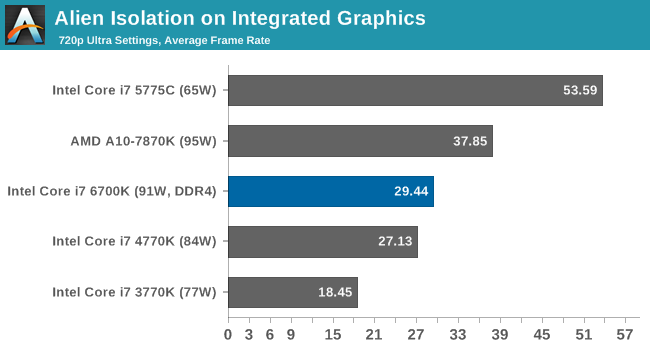
Intel’s latest integrated graphics processor found in its Skylake chips — the Iris Pro 580 with 72 execution units and 1152 GFLOPS compute performance — should outperform even more advanced discrete graphics processors. In fact, AMD's latest integrated graphics core also outperforms the low-end graphics card (albeit, by a small margin).
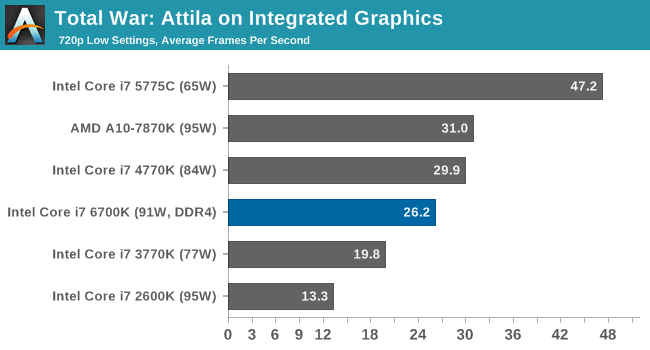

Because many people do not play demanding games that use the latest application programming interfaces (APIs), performance and features of Intel’s modern iGPUs may be enough for their needs. Moreover, since casual and even some mainstream gamers usually buy low-end graphics adapters, Intel’s Iris Pro 6200 and Iris Pro 580 can actually outperform such GPUs (or offer similar performance). It is not clear whether 80% of discrete graphics boards currently in use belong to the entry-level segment, but it evident that contemporary iGPUs are somewhat better than cheap video cards.
Even though enthusiast gamers do not use Intel’s high-end iGPUs, the company continues to thrive because of PC gaming. According to Intel’s management, sales of its Core i7-series microprocessors set records in Q2 2015 despite weak demand for personal computers overall. Moreover, Intel claims that shipments of high-end enthusiast-class hardware in general are at all-time high and growing. Intel sells not only powerful Core i7 CPUs with unlocked multiplier to demanding gamers, but also chipsets, solid-state drives, various controllers and other components for high-end PCs. As a result, the company takes advantage of increasing demand for powerful personal computers.
Source: Intel Investor Relations


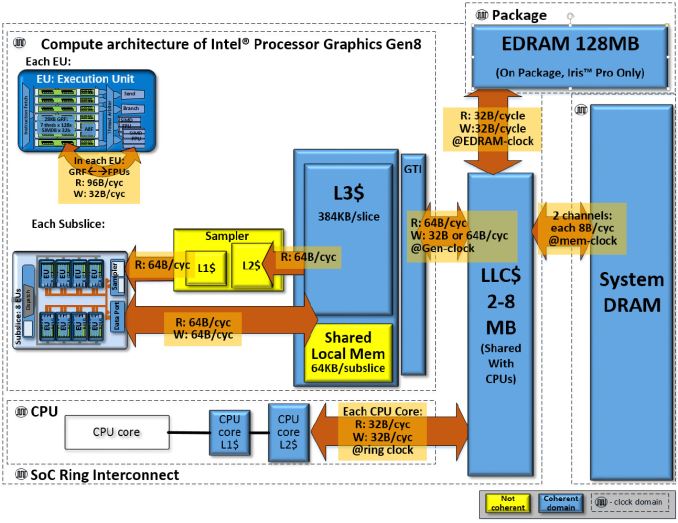
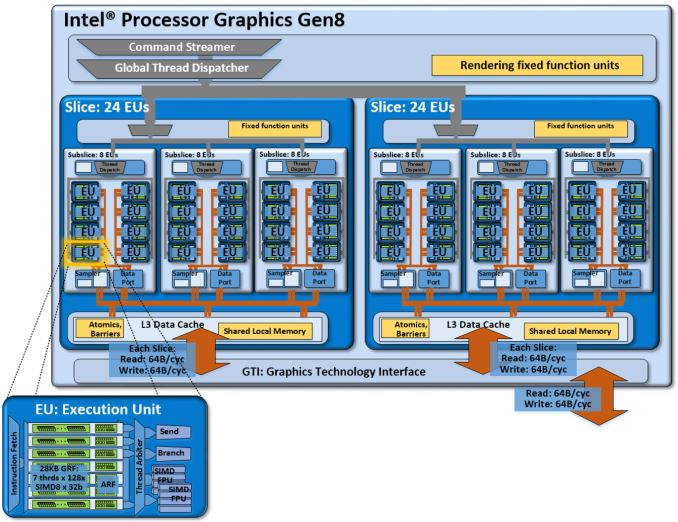








96 Comments
View All Comments
duploxxx - Thursday, January 14, 2016 - link
sure intel showing of there high end iris pro graphics performance, let people believe they get good graphics until they buy the low-mid i3-i5 and get horible gpu performance.btw 720p benchmarks are ****, that is what you find on crappy laptop screens these days.
testbug00 - Thursday, January 14, 2016 - link
"when you spend twice as much on our CPU with eDRAM than you would for an i3 and a cheap GPU we're almost as fast".Gee. Thanks. How about for the majority of the market where cost is the deciding factor.
Flunk - Thursday, January 14, 2016 - link
This would be nice if the chips that needed the higher-end integrated graphics actually had them. Very few notebooks ship with Iris Pro graphics because of the huge price premium that Intel changes for chips that integrate Iris Pro. Iris Pro on Intel's low to mid range chips would be an interesting product at the right price. Right now what they change for the functionality makes it very unpopular.imaheadcase - Thursday, January 14, 2016 - link
Not sure about anyone else, but "30 times what it was 5 years ago" seems pretty bad increases.xthetenth - Thursday, January 14, 2016 - link
Doubling right about every year is not bad at all.Gurbo - Thursday, January 14, 2016 - link
Come to our restaurant and with our world renowned wines, eat cardboard and paper! 30 times tastier than 5 years ago, when our soup of the day was dog puke!Yeah, the increase is good, but the starting point was horrible.
Guspaz - Thursday, January 14, 2016 - link
The big problem is that Intel's high-end iGPUs are indeed practical for a mainstream market... but they don't put those iGPUs on mainstream parts, they put them on high-end parts. So mainstream gamers get lower-end iGPUs which aren't practical.If Intel put the Iris Pro on every CPU from the i3 on up, then maybe they'd have a point.
DanNeely - Thursday, January 14, 2016 - link
They don't need to put it on every part; just offer a few variants with them. Non-gamers still buy the majority of CPUs; they just need enough to be able to watch cattube in whatever the latest encoding standard is without turning on the fan.Unfortunately for Intel, the other half of why budget discrete GPUs sell so well is that you can upgrade them. $100 for a new GPU after 2-3 years is a lot cheaper and less hassle than $200+ for a new CPU and mobo; if the new IGP needs faster dram to hit its full performance make that $300+. A $300 GPU will blow any of Intel's IGPs out of the water.
Gurbo - Thursday, January 14, 2016 - link
If they sell parts with worse iGPUs, guess which ones will end up inside the cases of the "mainstream" users? They need to sell IrisPro on every chip (maybe making an exception for Pentium ones) and give processors with no iGPU as the cheap alternative and/or to reduce costs on enthusiast parts. I don't know of many people who would buy a K processor and use the iGPU, anyway.bill.rookard - Thursday, January 14, 2016 - link
Anybody else notice which CPUs with the Iris graphics they were benchmarking? Yeah - the one that you -can't even freaking get-. The Broadwell based i7-5775c and the i5-5675c were both of such limited release that they might as well not even have been commercially available.Combine the relative scarcity with a lack of production, and that brings us to the second problem - price. Yes, you can get these chips if you search, but they'll run you anywhere from $300-500 USD. For that, you could get an i5-4670k and a 750ti which would blow the Iris graphics out of the water and save $100 to boot.